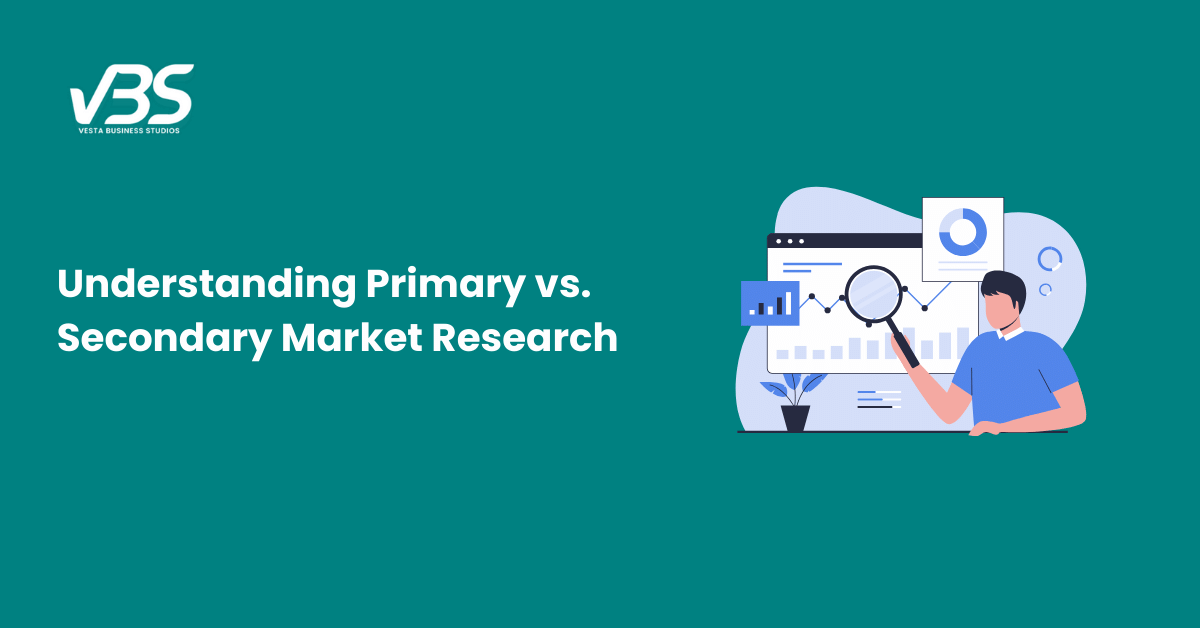Primary vs. Secondary Market Research – What is the Difference?
- Home /
- Primary vs. Secondary Market Research – What is the Difference?

-
Shivam singh
- May 28, 2024
The foundation of any good marketing plan has always been research into the target audience. Here is where the significance of thorough market research becomes apparent. You need to understand your target market’s tastes and habits if you want your goods and services to sell well.
Doing market research offers you the lowdown on your rivals and the products on the market. You can learn about the market’s requirements for success from the results.
Incorporating an insights library into your market research strategy may help you obtain more thorough, timely, and cost-effective research insights. You may also find out how well your own ads are doing by doing market research. Learn how well-known your goods and services are. If you’re a marketer, the results can inspire better packaging and ads to raise awareness of your business.
Before you can undertake useful market research, you must determine your objectives and the data you will need. Nevertheless, in order to address any marketing issue, sufficient, precise, pertinent, and up-to-date data is required. A significant amount of time, effort, and resources go into data collection.
Primary data and secondary data are the two main types of information utilized in marketing research. The two forms of information are not without their benefits and drawbacks. Additionally, distinct methods are used to gather both types of data.
To what extent does marketing use primary data?
Information that you collect specifically for the purpose of your research is known as primary data. You may tailor it according to your learning needs, which is a major plus. One drawback of this data collection strategy is how expensive it is to acquire.
The details that are directly and completely pertinent to the matter at hand are also known as primary data. These one-of-a-kind bits of data are the backbone of any marketing problem assessment and solution process. One way you have contributed to primary data collection is by being asked to fill out a survey.

In marketing, what does secondary data refer to?
When other people have already done the legwork of collecting, organizing, and publishing research, it is known as secondary research. There are research and reports from government bodies, trade groups, and other businesses in your field.
On a tighter budget than primary research, small businesses often turn to secondary sources because of the ease and low cost of access. There is a plethora of secondary data sources available nowadays. The Internet is among the most common places to find secondary info.
Features of Primary Data
- Included are exclusive facts.
- Primitive data might be quite pricey.
- They are collected in a systematic manner from the right people.
- Specific methods and tools, including surveys, observations, experiments, and so on, are used to gather primary data. These tools and procedures include printed forms, questionnaires, cameras, and so on.
- The research study would not be possible without them.
- They can’t be put to use until they’re given, processed, or assessed.
- It is labour-intensive and time-consuming to collect primary data.
- Concerning the matter at hand, they have congregated.
Read Also: Introduction to Market Research: A Comprehensive Guide
Features of Secondary Data
- Rather than collecting original data, researchers often use secondary data, which consists of previously published information.
- They supply the most current information.
- They could come from a variety of internal and external sources, depending on the research house or researcher.
- In comparison, they are less expensive and demand fewer resources (time, money, effort).
- In the past, other people may have collected them for their own research or needs.
- When supplementary to primary data, they are invaluable. Finding and analyzing problem areas is their primary application.
- It is possible to conduct research even in the absence of secondary data because their use is discretionary.
- You don’t need to process or analyze this data in order to use it.
- The three key issues with secondary data are its timeliness, correctness, and relevance.
Distinctions between main and secondary sources of information
- In contrast to secondary data, which may be out of current, primary data is updated in real time. In contrast to secondary data, which may be out of date, researchers doing primary research have access to up-to-date information.
- Researchers typically find the primary data collection approach to be a “involving” activity. Having said that, gathering secondary data is a breeze. The reason for this distinction is that longitudinal study is the norm in primary sources.
- Primary data is presented in its most unprocessed form. On the other hand, secondary data is usually presented to the public in a more refined form, and it is usually easier to interpret. On the other hand, researchers often find raw primary data that needs to be cleaned up.
Conclusion
You can’t deny the merits and shortcomings of either primary or secondary data. Therefore, the researcher must take these factors into account and select the most appropriate option.

